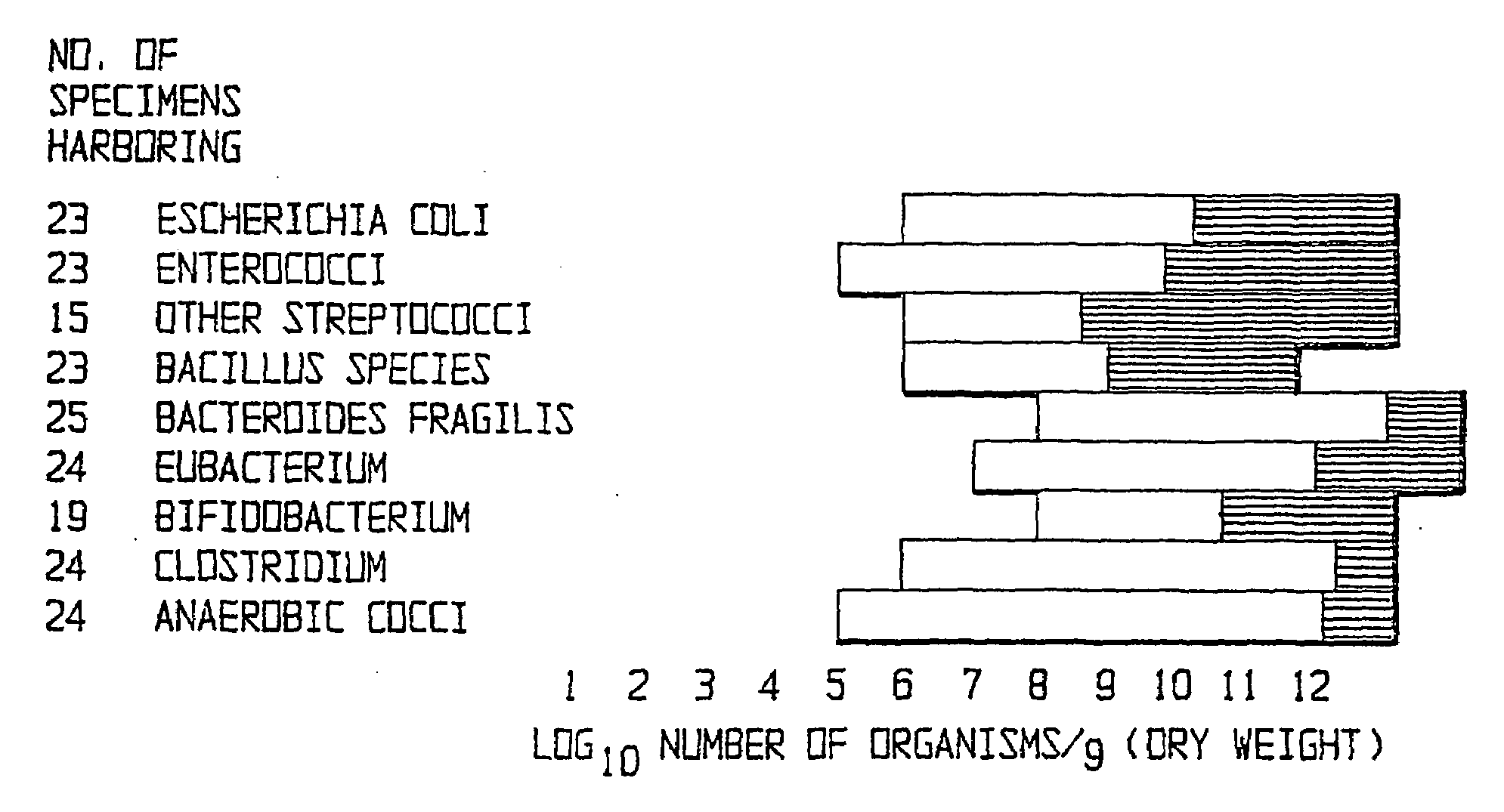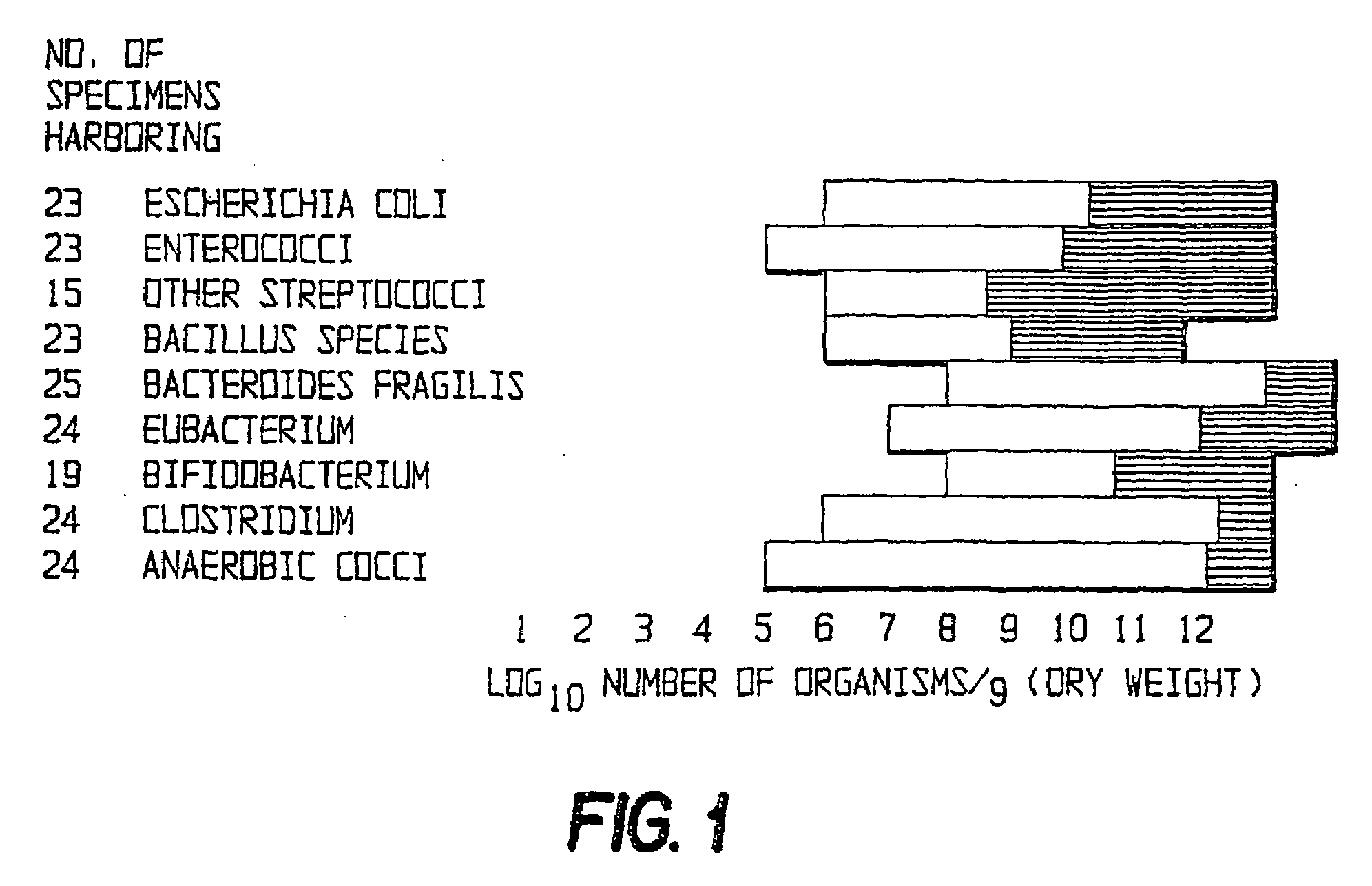Method of treating gastrointestinal diseases associated with species of genus clostridium
a gastrointestinal disease and genus technology, applied in the field of gastrointestinal diseases associated with species of genus clostridium, can solve the problems of ineffectiveness, low efficacy or efficacy of human pathogens, multidrug-resistant strains of i>mycobacterium tuberculosis /i>serious threat to tuberculosis control and prevention efforts, etc., to achieve low systemic concentration and high activity
- Summary
- Abstract
- Description
- Claims
- Application Information
AI Technical Summary
Benefits of technology
Problems solved by technology
Method used
Image
Examples
example 1
Results in Autistic Children
[0056]Experiments conducted with late-onset autistic children (Sandler et al., J. Child Neurol. [cite] (2000), herein incorporated by reference) have demonstrated success using methods of the invention. The inventors have recorded significant improvement in the symptoms of children with delayed-onset autism by providing them with antibiotics directed toward common anaerobic intestinal bacteria. By “delayed-onset,”“regressive,” or “late onset” autism is meant specifically an autism syndrome that appears in a child (generally between 12 and 18 months old) who has previously been developing normally. Symptoms include loss of language, social, and play skills, and onset of autistic characteristics such as avoidance of eye contact, self-stimulation behaviors, etc. Other forms of autism are clinically distinct in onset, for example early onset autism, where affected children may be born with the autistic condition or it may develop very early in life. Conventio...
example 2
Culture Conditions, Antimicrobial Susceptibility Determination
[0093]Culture Conditions
[0094]We use a selective medium for clostridia that contains (per liter) 25.0 g of brain heart infusion (BBL, USA), 20.0 g of agar (Sigma, USA), 76.0 mg of sulfamethoxazole, 4.0 mg of trimethoprim, 1.0 mg of vitamin K, 5.0 mg of hemin, and 50.0 ml of lakes sheep blood. All medium components except the two antimicrobial agents and the laked sheep blood are mixed, autoclaved at 121 deg C. for 15 mins and cooled to 50° C. in a water bath, at which point the three initially omitted ingredients are added. An additional medium is made up in identical fashion except that 30.0 to 50.0 g of agar is used, rather than 20.0, in order to make the medium stiffer and thus minimize spreading of clostridial colonies.
[0095]Stock solutions of antimicrobials are prepared separately in advance by aseptically dissolving the sulfamethoxazole in half volume hot water with a minimal amount of 2.5 M NaOH and the trimethopri...
example 3
Testing for Toxin Polypeptides
[0103]ELISA Testing—Rationale and Methods
[0104]Since all of the known clostridial neurotoxins share significant amino acid homology, low-level cross-reactivity of antibodies has been reported. This will allow us to detect a clostridial neurotoxin that is closely related to, but not identical with, tetanus toxin.
[0105]Media containing hydrolysates of casein the production of all known clostridial neurotoxins. Therefore, the cells were grown in Brain Heart Infusion Broth (Becton Dickinson, 20 Sparks, Md.) supplemented with 2.5% pancreatic digest of casein (Tryptone Peptone, Becton Dickinson). After five days of growth, the culture supernatants were clarified by centrifugation at 4000×g and filter-sterilized through a 0.45 μl nitrocellulose membrane filter. Antigens from known C. tetani strains (ATCC 10779, 19406, 453, 9441) and tetanus toxoid (Lederle, Pearl River, N.Y.) were used for initial optimization experiments and subsequently as positive controls....
PUM
| Property | Measurement | Unit |
|---|---|---|
| temperature | aaaaa | aaaaa |
| pH | aaaaa | aaaaa |
| weight | aaaaa | aaaaa |
Abstract
Description
Claims
Application Information
 Login to View More
Login to View More - R&D
- Intellectual Property
- Life Sciences
- Materials
- Tech Scout
- Unparalleled Data Quality
- Higher Quality Content
- 60% Fewer Hallucinations
Browse by: Latest US Patents, China's latest patents, Technical Efficacy Thesaurus, Application Domain, Technology Topic, Popular Technical Reports.
© 2025 PatSnap. All rights reserved.Legal|Privacy policy|Modern Slavery Act Transparency Statement|Sitemap|About US| Contact US: help@patsnap.com


